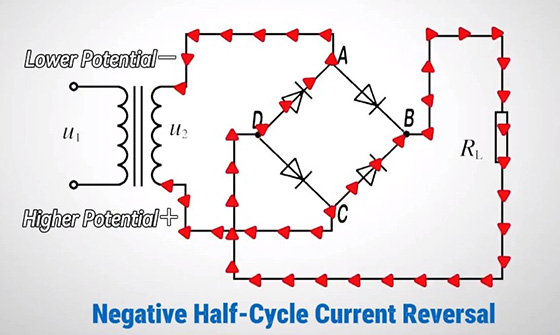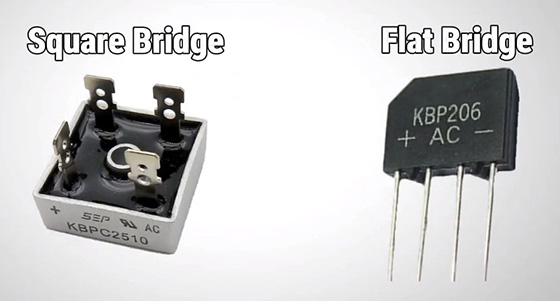How Does the Bridge Rectifier Work?
A bridge rectifier is an electrical component that converts alternating current (AC) into direct current (DC). It consists of four diodes arranged in a specific configuration, allowing effective conduction and rectification during both half-cycles of the current. As an essential component in electronic circuits, ATO industrial automation will now explain its working principle.
Positive Half-Cycle Operation
During the positive half-cycle of the AC voltage, current flows from the higher potential point (A) to the lower potential point (B). At this time, the diodes connected at points A and B conduct, allowing the current to flow in that direction. When the current reaches point B, it can only continue through the load to point D. Both paths from point D to points A and C are conductive, but since point A has a higher potential than point D, the current can only flow from D to C and then back to the power source, completing the circuit.

Negative Half-Cycle Operation
When the AC voltage reverses and enters the negative half-cycle, the current flows from the higher potential point to the lower potential point. During this phase, the diodes connected at points C and B begin to conduct, reversing the current flow path. The current then flows through the load to point D. At this point, both diodes from D to A and from D to C are forward-biased. However, since point C has a higher potential than point D, the current can only flow from D to A, ultimately returning to the AC source. By alternately conducting the diodes' paths during each half-cycle, the bridge rectifier effectively converts AC voltage into pulsating DC voltage.

Types of Bridge Rectifiers
A bridge rectifier is a specific type of rectifier. Common types of bridge rectifiers include square bridges and flat bridges. The specific parameters of these bridges typically indicate their current and voltage ratings. In the case of a square bridge, the position of the positive terminal differs from the other terminals, with diagonal terminals serving as the negative terminal and the remaining two as AC inputs. The flat bridge, on the other hand, has a notch to indicate the positive terminal, with the opposite side serving as the negative terminal and the middle terminals functioning as the AC input.

Conclusion
The bridge rectifier is an indispensable component in electronic circuits, capable of efficiently rectifying AC into DC through a clever arrangement of diodes. This process not only enhances the efficiency of power supplies but also ensures the stable operation of various electrical devices. Understanding its working principle is crucial for electrical engineers and electronics enthusiasts alike. For further understanding, you can refer to the video below.

